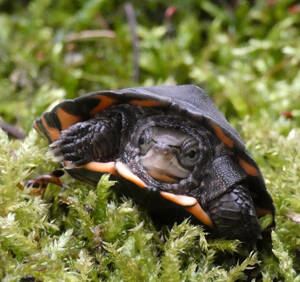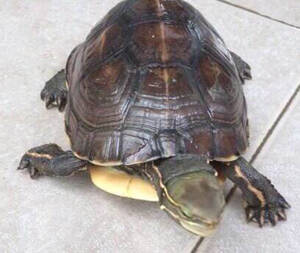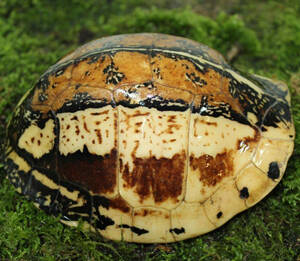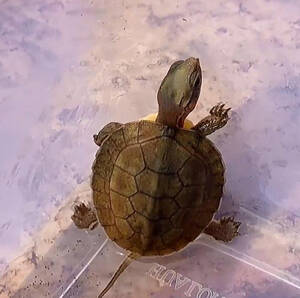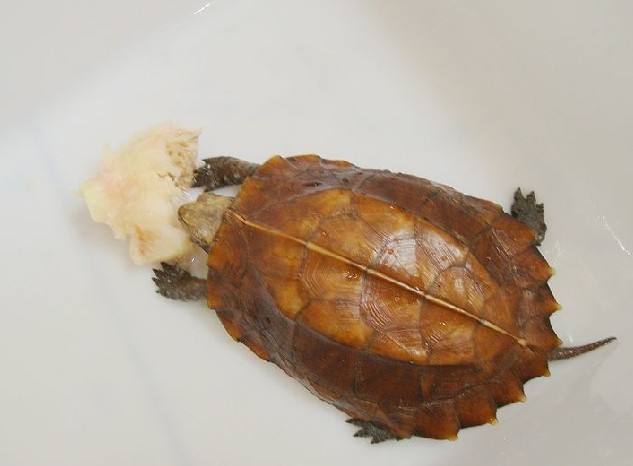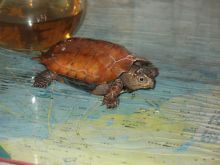Indotestudo elongata
IUCN
LCBasic Information
Scientific classification
- name:Indotestudo elongata
- Scientific Name:Indotestudo elongata,Elongated Tortoise,Yellow elephant turtle, pillow turtle, dry turtle, Burma land, dragon claw turtle and so on
- Outline:Testudines
- Family:Chelonidae I.Chelonidae
Vital signs
- length:20-40cm
- Weight:About 1kg
- lifetime:30-50years
Feature
Big eyes, short neck, high back and long nails.
Distribution and Habitat
It is distributed in Guangxi and Yunnan in China. It is distributed abroad in Pakistan, Cambodia, India, Laos, Malaysia, Nepal, Thailand, Vietnam, and Myanmar.
Like humid environment, morning and evening activities more, like crawling after the rain for food. The diet is mainly plant, but also eats a small amount of animal food.
Appearance
Head scaly, upper margin slightly uncinated, lower margin serrate. Dorsal armor long oval, high arch, slightly flat center, neck shield narrow long, buttock shield single. Head yellow, tending to light yellow; The dorsal and ventral armor are yellow, with irregular black markings on each shield; The limbs and tail are pale yellow without black markings. The tail is short and ends with a horny claw.
Details
Burmese tortoises are subtropical terrestrial tortoises, living in mountains, hills and bush forests, active at night, warm and afraid of cold. Docile, spiritual, mainly herbivorous, but also eat animal food, can feed melons, fruits, vegetables, lean meat, etc., like to eat tomatoes. The optimum temperature for growth is 23-32℃, and the optimum temperature is 26-30℃.
< img SRC = "/ static/upload/images / 20220922/1663837542108208. JPG" title = "1663837542108208 JPG" Alt = "2 _ nine ray image converter. JPG" / >
Burmese tortoises mature sexually for more than 7 years at natural temperatures. Mating usually begins in May, with July-August being the peak season. When the male turtle is in heat, he follows the female turtle, when the female turtle stops, the male turtle climbs to the front of the female turtle, stretches his head and neck, constantly moves up and down, and touches the female turtle's head with his mouth from time to time to stop the female turtle from crawling. When the female turtle stops crawling, the male turtle promptly walks around the female's back, climbs on the back armor, and copulates.
Burmese tortoises dig holes to lay their eggs in the wild, preferring to lay their eggs in a more sheltered place under trees with higher humidity. The egg pit is about 10 cm deep, and the upper layer of the eggs is loose soil with high humidity, which is covered with dead branches and leaves for hiding. Eggs are laid from May to October every year, 1-2 times a year, 1-6 eggs each time. The eggs are white, round or oval, and hatch for about 60 days under artificial conditions.
< img SRC = "/ static/upload/images / 20220922/1663837551113949. JPG" title = "1663837551113949 JPG" Alt = "2 _ nine ray picture converter (1). The JPG" / >


